How Planck's astronomical satellite forever changed our view of the universe.
- Transfer
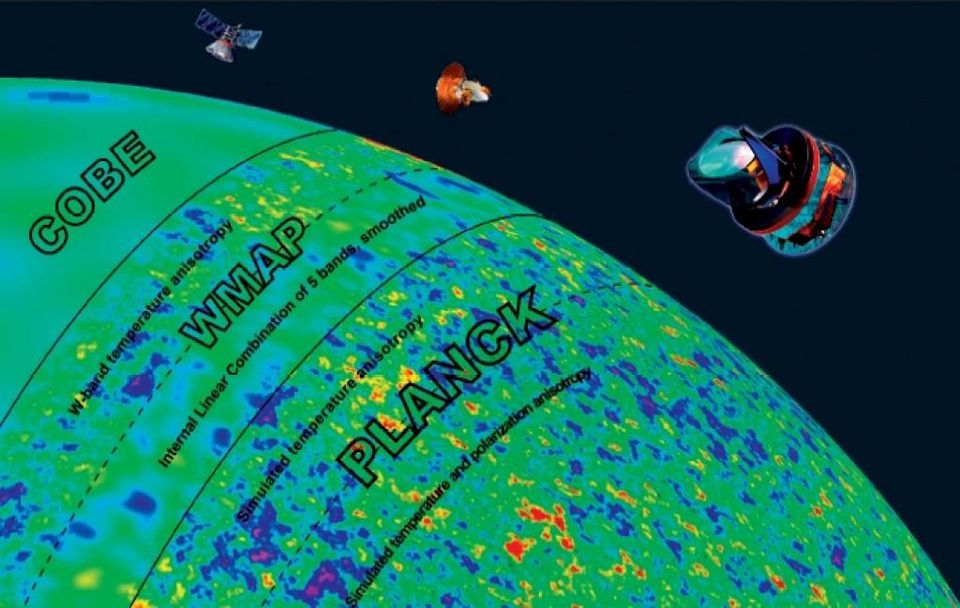
The detail of the residual luminosity of the Big Bang has steadily increased thanks to new satellite imagery. The latest, final results of the Planck satellite give us the most accurate picture of the Universe.
More than 50 years have passed since humankind discovered a uniform flow of low-energy microwave radiation emanating from all parts of the sky. It comes not from the Earth, not from the Sun or even from the Galaxy; it comes from places beyond any star or galaxy we have ever seen. And although its discoverers at first did not know what it meant, a group of physicists who were located not far from them had already developed an experiment to search for precisely this sign: the theoretical residual glow of the Big Bang.
At first it was called the primordial fireball, and then we called it relic radiation (RI) [ or cosmic microwave background, cosmic microwave background (CMB) / approx. trans. ], and already measured its properties to the smallest details. The most advanced observatory that ever measured its properties is the astronomical satellite Planck of the European Space Agency , launched in 2009. The satellite has collected a full set of data for several years, and scientists have just completed and published their final analysis. And so, how he forever changed our view of the universe.
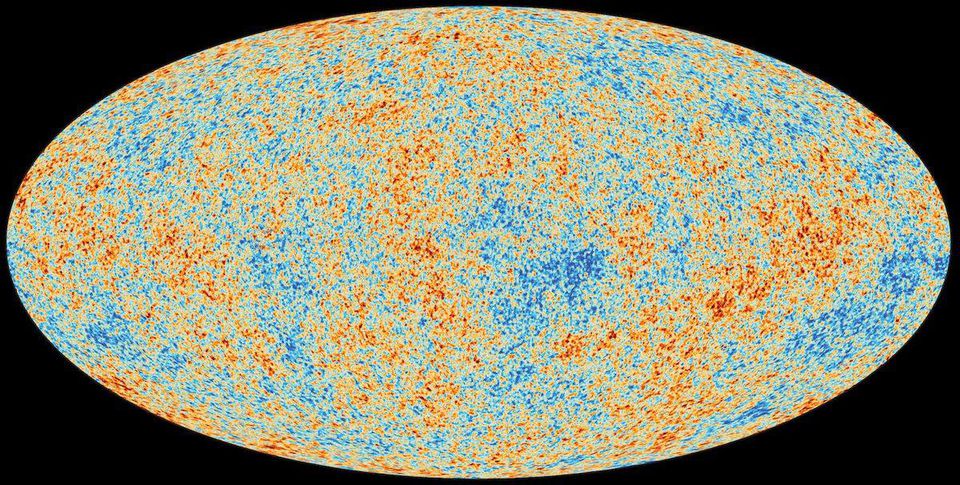
The residual luminescence from the Big Bang, RI, is not uniform, and has many tiny imperfections and temperature fluctuations in the range of several hundred microkelvin. And although it plays an important role in the period after gravitational growth, it is important to remember that in the early Universe, like the large-scale Universe of our days, heterogeneity reaches values of only 0.01%. Planck discovered and measured these fluctuations with an accuracy not previously available.
This snapshot of the infant period of the universe, which depicts the light emitted when she was only 380,000 years old, is the best one ever made. In the early 1990s, the COBE satellite gave us a first approach to it, an RI map for the entire sky with a resolution of about 7 degrees. About 10 years ago WMAPI could increase the resolution to half a degree.
And what about Planck? Planck is so sensitive that its limitations are caused not by instruments capable of working with a resolution of up to 0.07 °, but by the fundamental astrophysics of the Universe itself! In other words, at this stage in the development of the Universe it is impossible to get an image better than Planck did. Increasing the resolution will not give you more information about space.

COBE, the first satellite to study the RI, measured fluctuations with a resolution of 7º. WMAP was able to improve the resolution to 0.3 ° in five different frequency ranges, and Planck took measurements with an accuracy of 5 minutes of angle (0.07 °) in nine different frequency ranges.
Planck also managed to measure this radiation and its fluctuations in a larger number of frequency ranges (in total, nine) than any other of the previous satellites. COBE had four ranges (and only three useful ones), and WMAP had five. COBE could measure temperature fluctuations as high as 70 µK; Planck was able to improve accuracy to 5 μK.
The high resolution, the ability to measure the polarization of this light, and the various frequency ranges helped us understand, measure and subtract the effects of dust in our galaxy better than ever before. To understand the residual luminescence of the Big Bang, it is necessary to study with no less precision those effects that can contaminate the desired signal. This step had to be done before extracting any cosmological information.

The complete Milky Way dust map obtained by Planck demonstrates a two-dimensional map of the distribution of dust in the Galaxy in low resolution. This “noise” must be subtracted in order to recreate our background prehistoric cosmic signal.
Having received a full signal from the early Universe, it is possible to analyze and extract all possible information. This means extracting from the temperature fluctuations occurring on large, medium and small scales, such information as:
- how much normal matter, dark matter and dark energy is in the universe,
- What was the initial distribution and spectrum of density fluctuations?
- what is the shape and curvature of the universe.
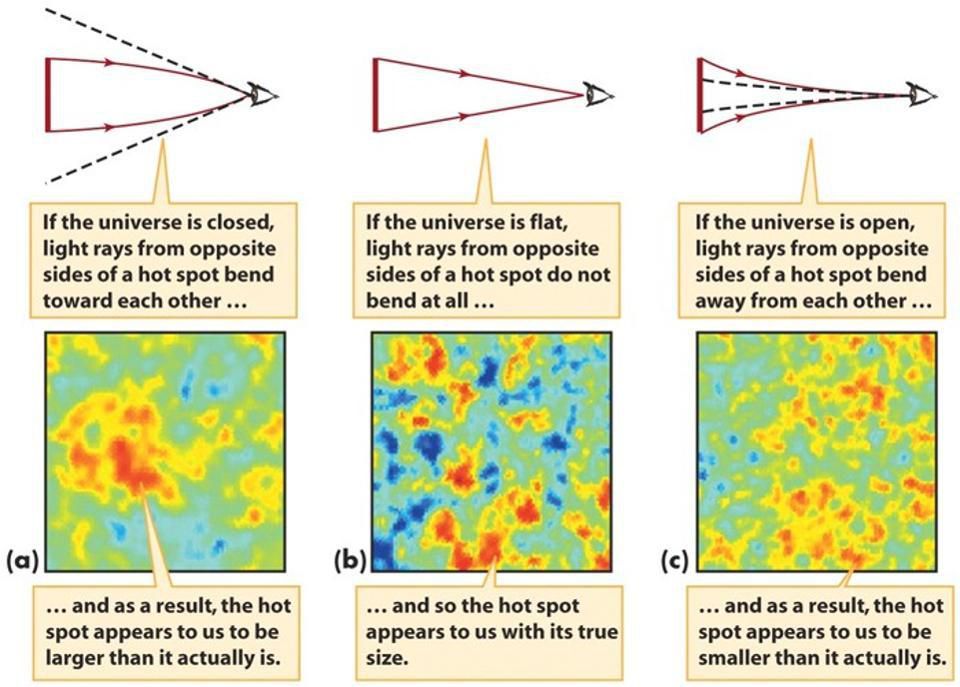
The temperature values at hot and cold points, as well as their scales, indicate the curvature of the Universe. The best of our measurements give us a flat universe. Baryon acoustic oscillations and RI together provide the best methods for limiting the error of this measurement to 0.1%.
What happens on different scales does not depend on each other, but strongly depends on the composition of the Universe. We can also study the polarization properties of this radiation, and get even more information, for example:
- when the reionization of the Universe took place (and, accordingly, the formation of stars reached a certain threshold),
- were there fluctuations that exceeded the horizon,
- can we see the effect of gravitational waves,
- neutrino quantity and temperature at a time
and much more. Although the RI temperature obtained by us is still at the level of 2.725 K, much more has been known for the quantities we have known for several decades. Given all this, this is how Plank changed our perception of the universe forever.
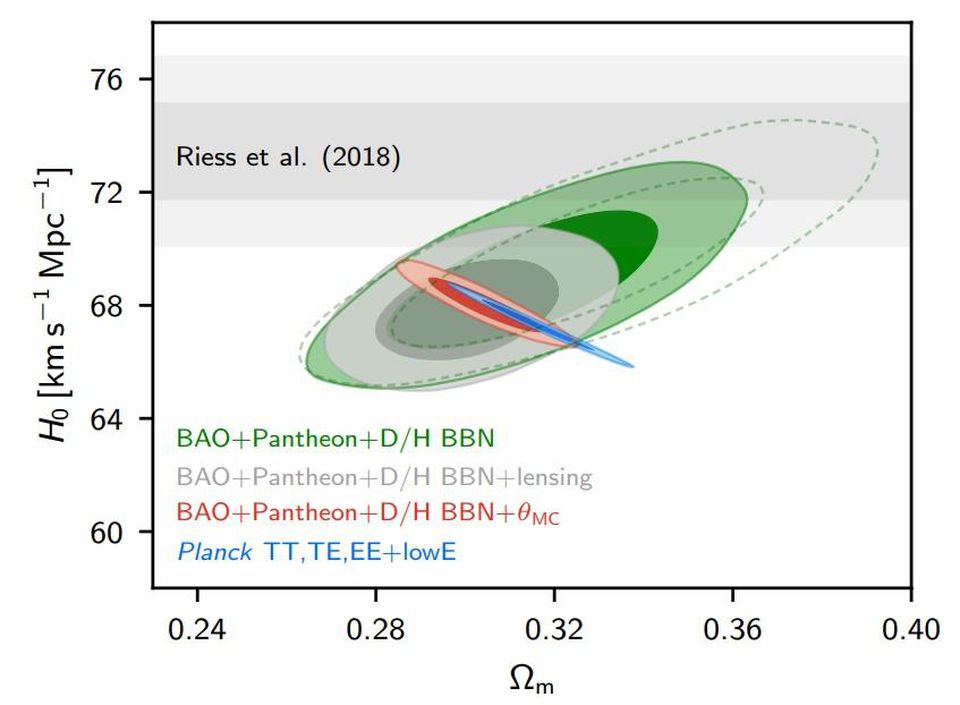
The data of the Planck satellite together with additional data sets gave us very strict restrictions on the possible values of cosmological parameters. In particular, the Hubble expansion rate is in the range of 67 to 68 km / s / Mpc.
There was more matter in the universe, and its expansion rate turned out to be less than we thought. Before Planck, we considered that in the Universe 26% of matter and 74% of dark energy, and the expansion rate was about 70 km / s / Mpc.
And now?
In the universe, there were 31.5% of matter (of which 4.9% is normal and the rest is dark), 68.5% is dark energy, and the expansion speed is 67.4 km / s / Mpc. Moreover, the speed has such a small error (~ 1%) that it conflicts with measurements made on the basis of the space ladder distances , from which a speed of 73 km / s / Mpc is obtained. This is perhaps the greatest contradiction of all relating to the modern view of the universe.
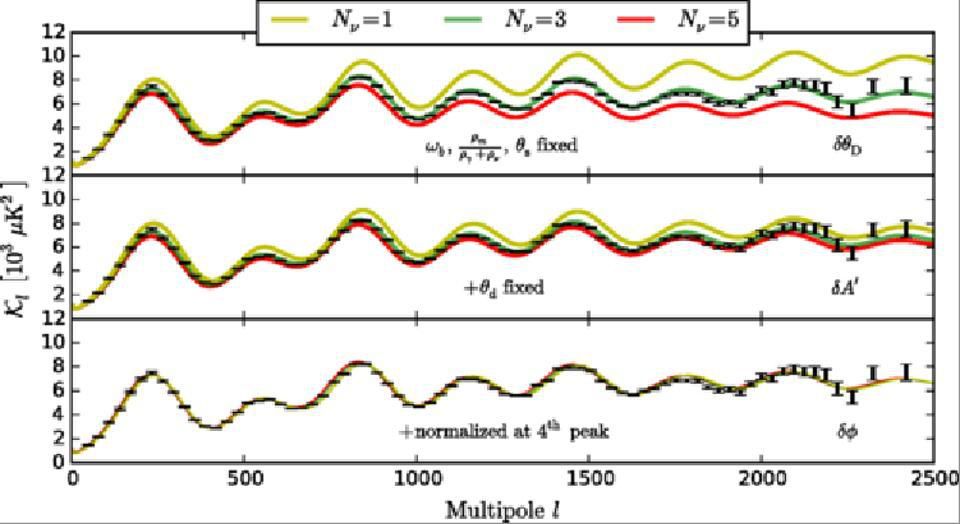
The fit of the number of neutrino species necessary to match the RI fluctuation data. These data correspond to the neutrino background with a temperature that is energetically equivalent to 1.95 K, which is much less than that of RI photons. Recent results from Planck also definitely indicate only three types of light neutrinos.
We found out from Planck that there are only three types of neutrinos, and that the mass of each type cannot exceed 0.4 eV / s 2 : it is 10 million times smaller than an electron. We know that the cosmic temperature of these neutrinos corresponds to 72% of the temperature / kinetic energy of photons RI; if they did not have mass, then today their temperature would be 2 K.
We also know that the Universe is very, very flat in terms of overall spatial curvature. Combining data from Planck with data on the formation of large-scale structures, we can establish that the curvature of the Universe does not exceed 1/1000, that is, the Universe is indistinguishable from the ideally flat one.
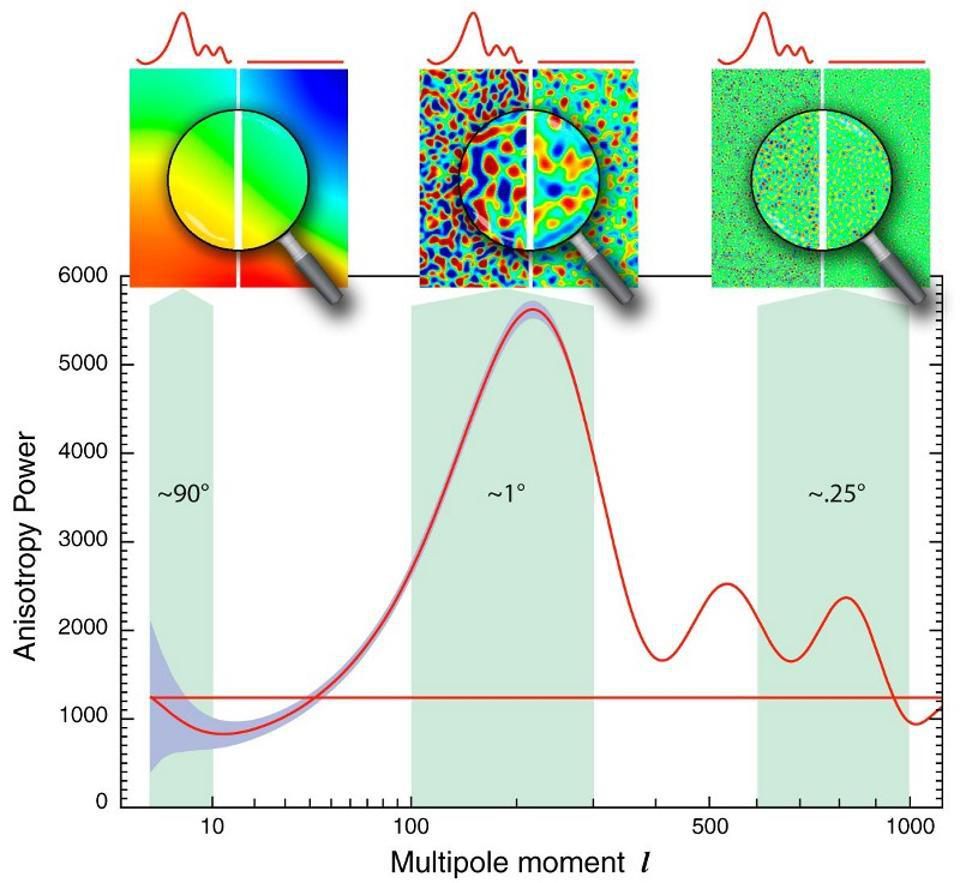
RI fluctuations are based on primary fluctuations produced by inflation. In particular, the flat part of the graph on a large scale (left) cannot be explained without inflation. A straight line indicates the seeds, of which a dip and peak pattern will appear in the first 380,000 years of the Universe, assuming that n s = 1. The real spectrum of data from Planck gives a small but important deviation: n s = 0.965
We also have the best proof today that density fluctuations ideally coincide with the predictions of the theory of cosmic inflation. The simplest models of inflation predict that the fluctuations with which the universe was born were the same on all scales, and on a large scale they were slightly stronger than on small ones.
For Planck, this means that one of the quantities that he can derive, n s , should be almost 1, but be a little less than that. Planck's measurements were the most accurate of all, and inflation was perfectly confirmed: n s = 0.965, with an error less than 0.05%.
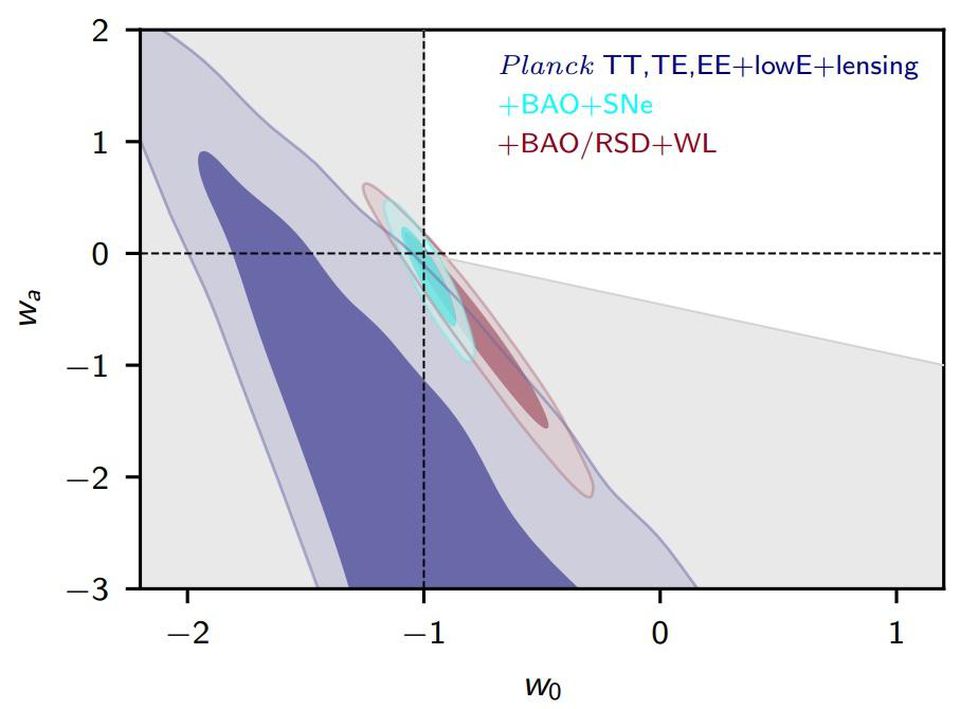
By themselves, the data from Planck do not give very strict restrictions on the equation of state of dark energy. But if we combine them with a complete set of data on large-scale structures and supernovae, we can definitely demonstrate that dark energy fits extremely well within the framework of a pure cosmological constant (the intersection of two dotted lines).
And then there is the question of whether dark energy is a truly cosmological constant, and it is very sensitive to both RI and data from the most remote corners of the Universe — for example, type Ia supernovae. If dark energy is an ideal cosmological constant, then its equation of state, given by the parameter w, should be exactly equal to -1.
Measured value?
We found that w = -1.03, with an error of 0.03. Evidence in favor of other options is not observed, that is, this data does not support a large compression and a large gap .

Our best measurements of the ratios of dark matter, normal matter and dark energy in the Universe today, and how they changed in 2013: before Planck and after the release of the first Planck data. The final result obtained from Planck is no more than 0.2% different from the first.
Left - before, right - after. As a result, we have 68.3% of dark energy, 26.8% of dark matter and 4.9% of ordinary matter
Little has changed, and other values. The universe is slightly older (13.8 instead of 13.7 billion years old) than we previously thought; the distance to the edge of the observable Universe is slightly less (46.1 instead of 46.5 billion light years) than WMAP showed; restrictions on the magnitude of the gravitational wave created by inflation have improved slightly. The tensor-scalar ratio parameter, r, to Planck was bounded above by a value of 0.3. Now, with data from Planck, on large-scale structures and other experiments (for example, BICEP2 and the Keck array), we can confidently assert that r <0.07. This excludes several inflation models that were previously considered possible.
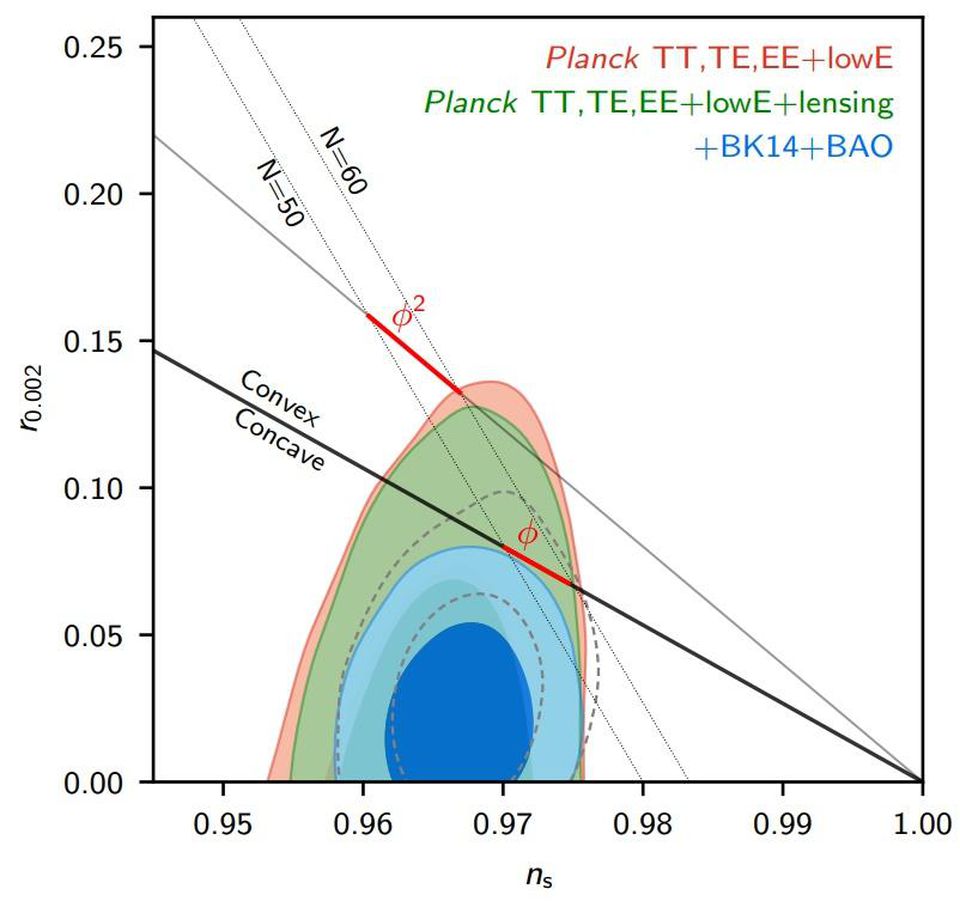
Vertically - the ratio of the tensor to the scalar ®, horizontally - the scalar spectral index (n s), determined by Planck and data on supernovae and large-scale structures. Note that if n s is well bounded, then you cannot say the same about r. It is likely that r will be extremely small (up to 0.001 or even less). Planck's constraints, even the best available, are still not good enough.
And now, with all this data, with which ideas about the Universe and its components can we say yes, and with which no?
- Yes - inflation, no - gravitational waves after it.
- Yes - the three ultra-light neutrinos of the standard model, no - extensions.
- Yes — a slightly slower expansion, an older Universe, no — no evidence of spatial curvature.
- Yes - a little more dark matter and normal matter, and a little less dark energy.
- No - changing dark energy, Big break and Big compression.
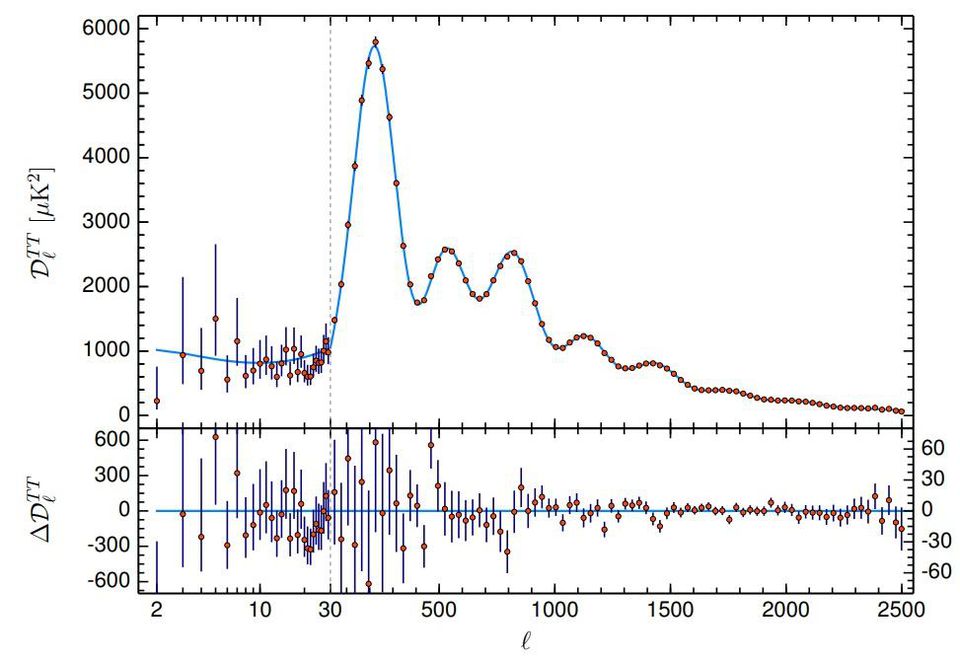
The final results of the Planck collaboration demonstrate the extremely accurate coincidence of cosmology predictions with an abundance of dark energy and dark matter (blue line) with the data (red dots and black errors). All 7 acoustic peaks perfectly match the data.
Most importantly, there is tremendous consistency with an unprecedented accuracy between the observed RI and the theoretical predictions of the behavior of the Universe with 5% normal matter, 27% dark matter and 68% dark energy. Some of these values can fluctuate within 1-2%, but the Universe cannot exist without large quantities of dark matter and dark energy. They are real, they are necessary, and their predictions perfectly fit the entire data set.
Inflation, neutrino physics and the Big Bang have received additional confirmations, and alternatives and special options have become more limited. Certainly, as Planck’s collaboration writes, “We did not find convincing evidence of the need to expand the base lambda-CDM model .” Finally, we can state with extreme certainty what the Universe is made of.
